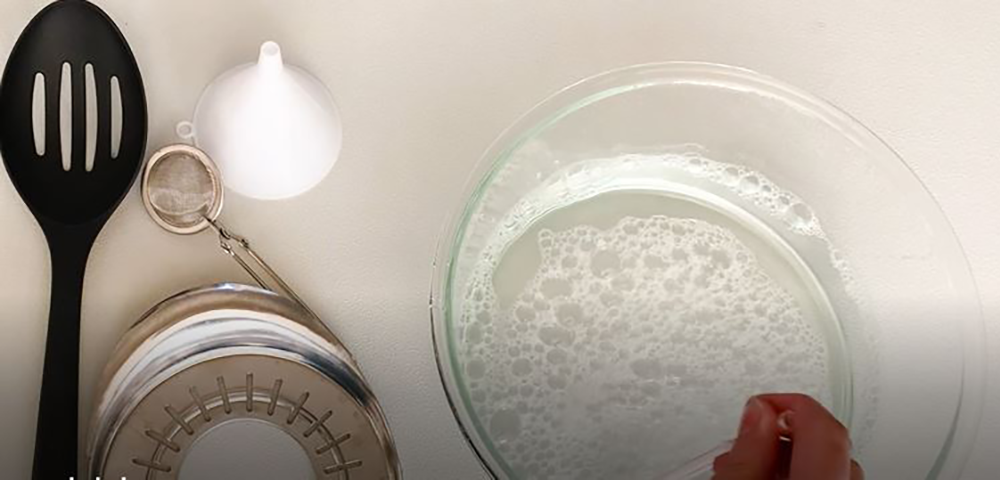
Help your little one become a bubble scientist. Try this easy soap bubble recipe at home for some bubble magic. Blowing bubbles can be fun, but they are also a great way to learn some science!
MATERIALS
- 1 large bowl, plastic dishpan, or other container
- ¼ cup dishwashing detergent*
- 2 ½ cups cold water*
- Baking sheet or plastic plate to contain the bubble solution. (Newspapers are helpful to have on hand!)
- Bubble-making materials (ex. pipe cleaners, paper clips, cookie cutters, fruit baskets, slotted spoons, straws, etc.)
*Note: This makes 3 cups of bubble solution. Adjust the recipe to make as much as you would like. Depending upon what type of dish soap you are using, you may need to add more to the solution. Try it out and play around!
English
Vietnamese
TRY IT!
- Measure out the water and dish soap into a container.
- Stir gently – to avoid creating froth when mixing your solution.
- Test your bubble solution out by dipping your hand into the solution and making the “OK” symbol with your fingers. Can you blow a bubble? If the solution pops too easily, add a bit more soap and try again. If it seems too thick, add more water. Enlist your older children to assist with this process.
- Look around your house together for materials that could make good bubble wands.
- If you are experimenting inside, use objects like straws to make bubbles on a plastic plate or tray. If you are experimenting outside, go big with objects such as spatulas, slotted spoons, or a large loop of string.
- Before dipping your objects into the bubble solution, ask your children to predict what will happen.
- Continue experimenting with new objects!
GUIDING QUESTIONS
- How can you make bubbles?
- What shape do you think the bubble will be?
- What colors do you see in the bubble solution?
- How can you use your hands to make bubbles?
- How do the bubbles change when you blow into your bubble wands versus waving your wands in the air?
LEARNING BEHIND THE PLAY
- Encourages connection-making between cause and effect. Children can observe the differences in blowing long and short breaths through their bubble wands. How does their length of breath affect what kind of bubbles they make? How does it feel to take long breaths versus short breaths?
- Supports gross motor development through the use of larger tools (e.g. spatulas) and engaging in active bubble play such as chasing, jumping, and reaching for bubbles.
- Develops hand-eye coordination as your children concentrate on blowing their breath through their bubble wands.
TAKE IT FURTHER
Experiment in making small and large bubble wands. How small can you make a wand that still works? What’s the biggest wand you can make? What materials can you use to build your own unique bubble wands?

